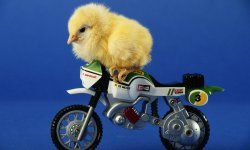On its good days, science is incredible, enlightening and amazingly informative. On its bad days, science is gross, disturbing and downright bizarre. We had to sift through some pretty murky waters to compile this list of odd questions science has tried to answer. Talk about typing a word into the Google machine for perfectly innocent reasons and getting completely perturbing results for your efforts.
Diamonds concocted from tequila, panda poop used as compost, uncontrollable coffee mugs, strangely swishy ponytails and the brain activity of dead salmon were some of the tame ones. Once we hit "how to make sure a patient receiving a colonoscopy doesn't explode" we were ready to call it a day.
Advertisement
And yet we persevered, sorting through all the gory consequences of these ill-advised searches just for you. Here's what came out of that shudder-inducing process.








